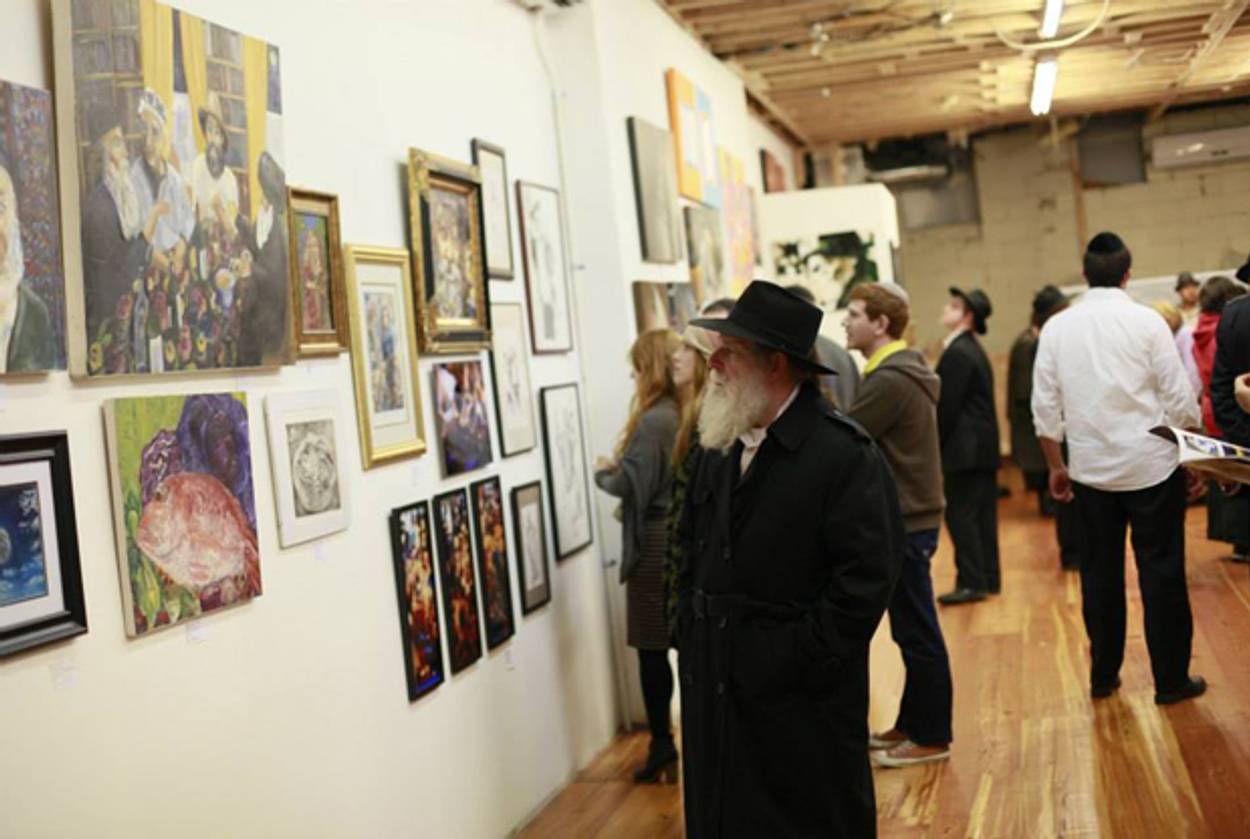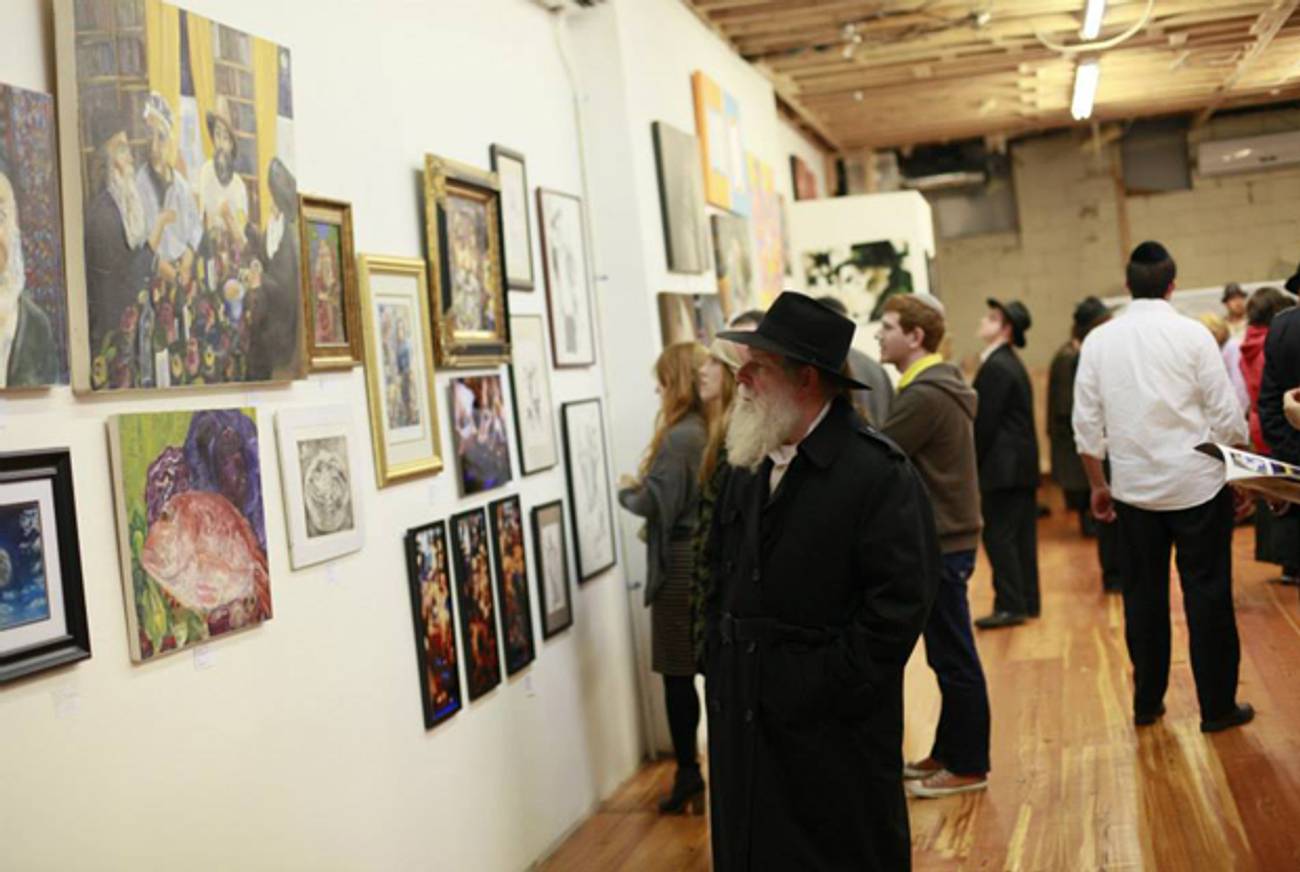A New Generation of Hasidic Artists on Display
New pop-up exhibit in Brooklyn showcases the work of young Jewish artists




Sometimes contemporary Jewish art surprises you.
The images displayed in this artistic genre can often seem so synthetic: the modestly-clad woman, the Torah scrolls and their scholars—the messages of tradition almost hit you in the face. But every once in a while you’ll come across something that evokes the exact emotion you want to feel when looking at Jewish art, and you’re reminded why these same images and characters have been painted again and again by Jews for thousands of years.
Pure Joy, a pop-up art gallery in Brooklyn displaying the work of 30 Hasidic artists, succeeds in stirring that emotion, despite the wide array of art it features. Open through October 13, the Crown Heights exhibit was curated by Chabad rabbi and artist Yitzchok Moully. The project is part of Creative Soul, a group of male and female Hasidic artists who aim to promote creativity in the Orthodox communities.
Pure Joy is the project’s third annual exhibit, and the gallery is also home to Creative Soul events, including an open mic night for Hasidic writers, a Ted talk on Chabad philosophy, an all-women’s open mic night and a concert featuring the popular women’s group Bulletproof Stockings.
“There’s this perception in the Hasidic community that there needs to be a boundary between Torah and creativity,” Moully said. “We’re trying to change that attitude because in essence, creativity and self expression are very integral to Judaism.”
The art exhibit was Moully’s idea. Walking in Crown heights three years ago, he stumbled upon a high-ceiling storefront selling etrogim that was empty the rest of the year. He displayed some of his artwork as the first exhibit, and reached out to a few fellow Hasidic artists. As the exhibit reached its third year, the number of artists contributing has tripled.
The gallery opened September 21 for a Sukkot debut, and has drawn in crowds by the thousands. It has a warehouse-style vibe with unfinished wooden rafters and studio lighting—it is Brooklyn, after all—and almost everything hanging is for sale. Prices range from $50 to $4,000.
The variety of the art is expansive, from a brightly colored, four-foot splatter painting by Moully simply titled “Life,” to a cubism-depiction of the seven days of creation, to abstract ink splatters of Hasidic men dancing, to a moody charcoal sketching of children, presumably orphans, lighting Shabbat candles. Oh, and many, many drawings of the late Menachem Mendel Schneerson, the beloved Lubavitcher Rebbe, because an art exhibit blocks away from the Chabad headquarters at 770 Eastern Parkway will, most certainly, feature paintings of the Rebbe.
Moully, a 35-year-old father of five, said the exhibit has garnered a positive response from the wider community. Older Hasidic men, he said, stroll through the exhibit and pensively hover in front of the wall displaying the various sketches of the Rebbe, swapping stories of how he changed their lives during their youth. Teenagers as young as 13 have approached Moully asking to display their art after touring the gallery. His approach for submissions has been very inclusive: the theme of the exhibit is joy, so artwork must express that in some way to get wall space. Ultimately, the exhibit aims to explore the colors within Jewish identity.
The exhibit comes as somewhat of a response to a need: there is a budding community of young, enthusiastic artists in the Hasidic population, and Moully noted there has never been a physical space for people to gather and share ideas in the name of art.
“It’s really important to have an actual space that can hold the community’s creativity,” said Amy Wolfe, one of the Hasidic writers who read at the exhibit’s literary event. Some 25 Hasids and hipsters had gathered for the literary event Tuesday night to listen to four Hasidic writers read excerpts about their religious journeys.
“There’s already encouragement for art in the community, but this group definitely breaks down stereotypes,” she added. “This space can actually pull us all together.”
Chavie Lieber has written for The New York Times, New York Magazine, The Daily Beast, the Huffington Post, Business Insider, the Times of Israel, and more. Follow her on twitter @chavielieber.